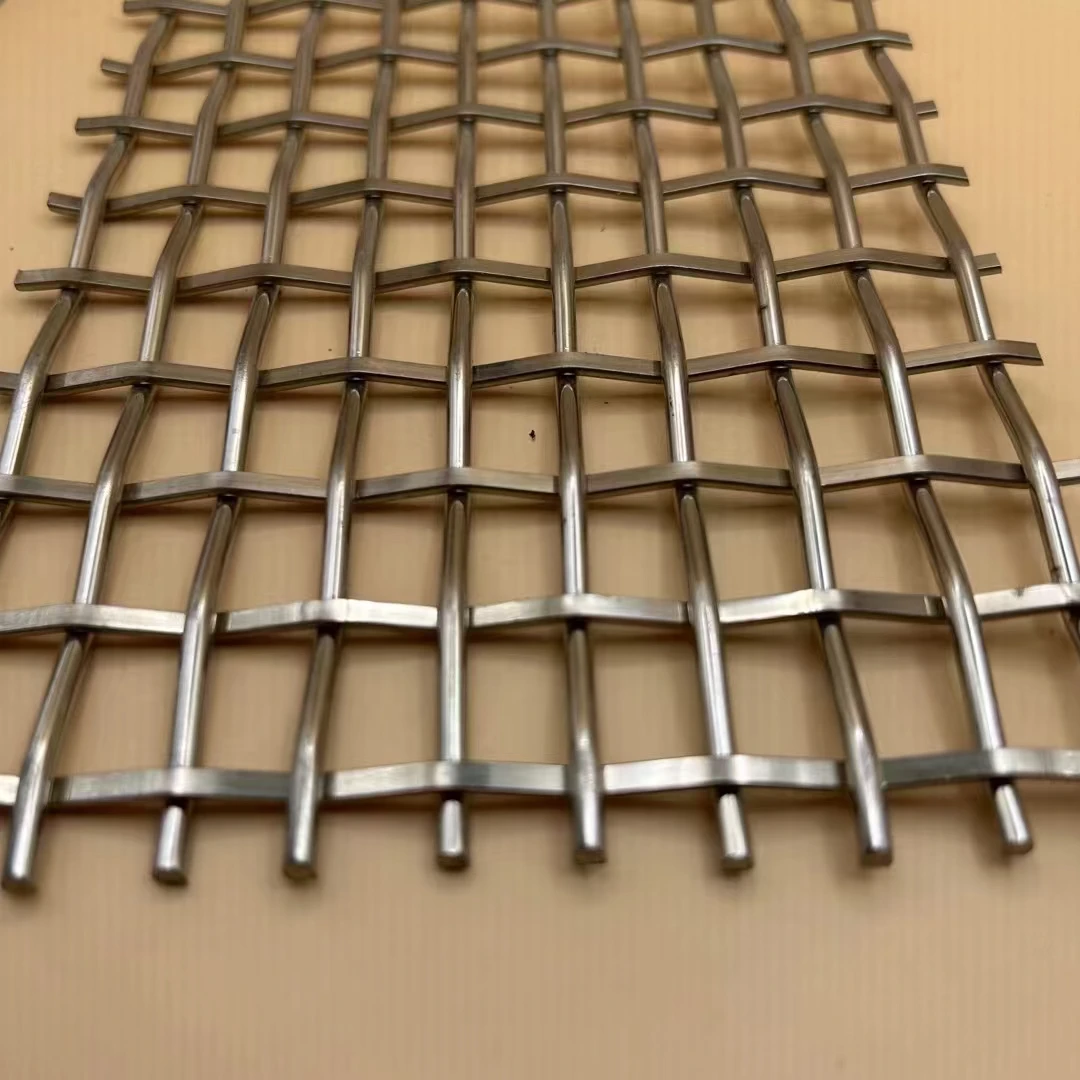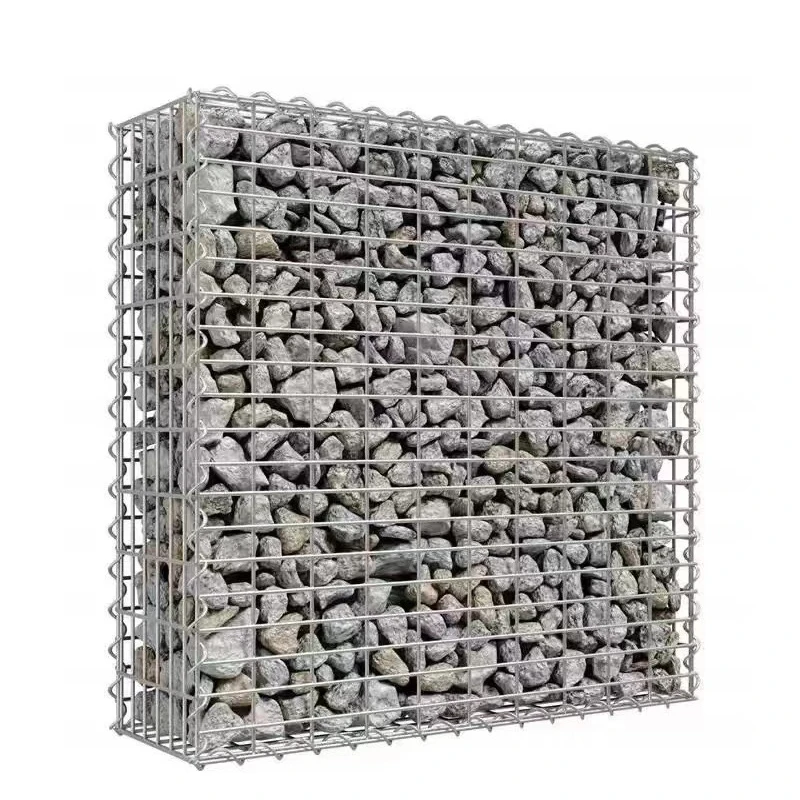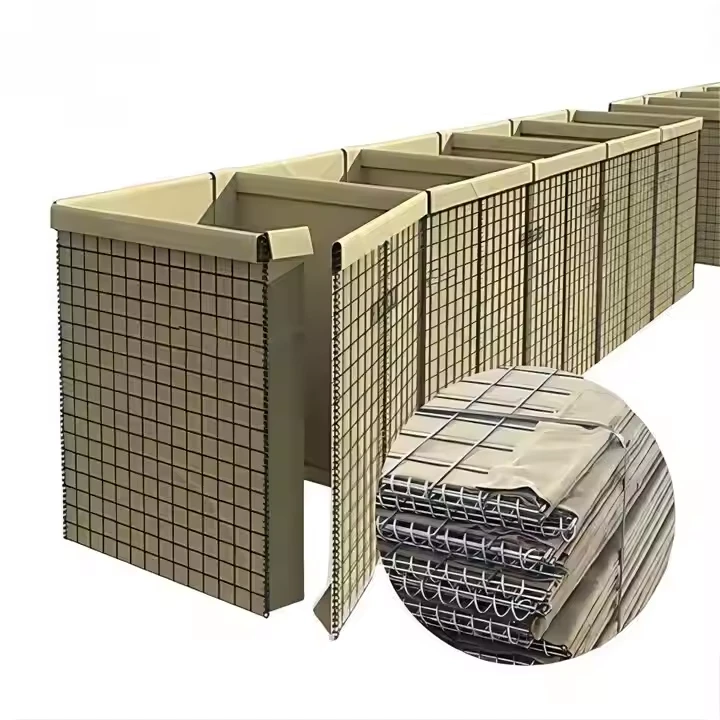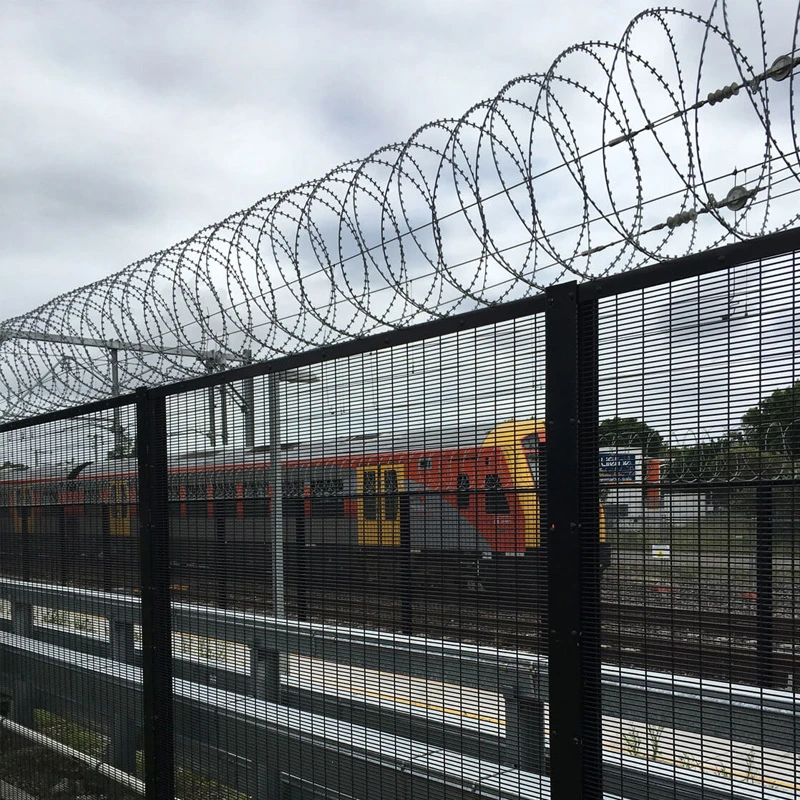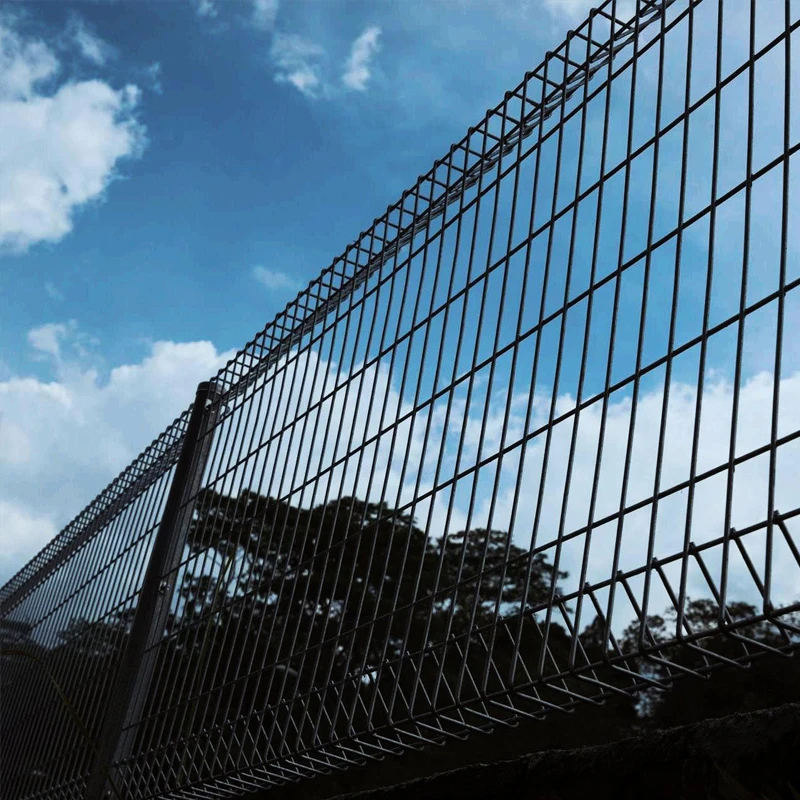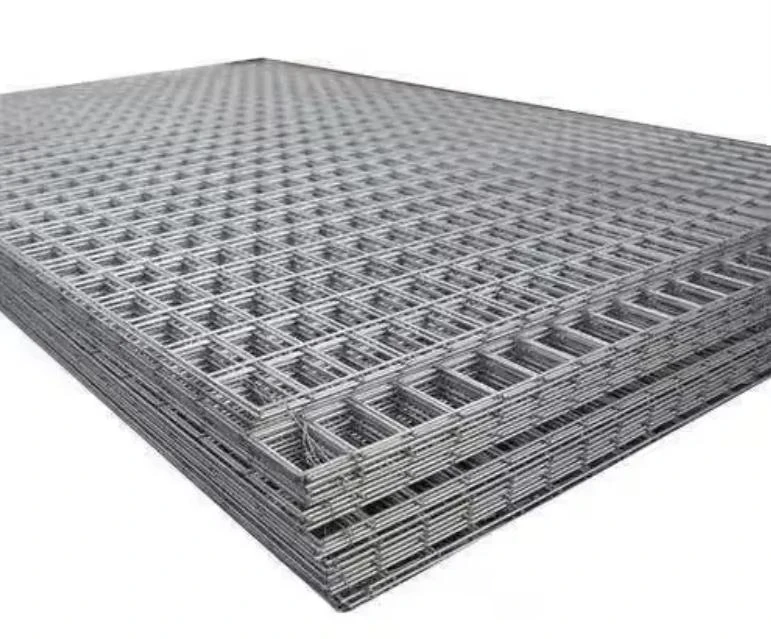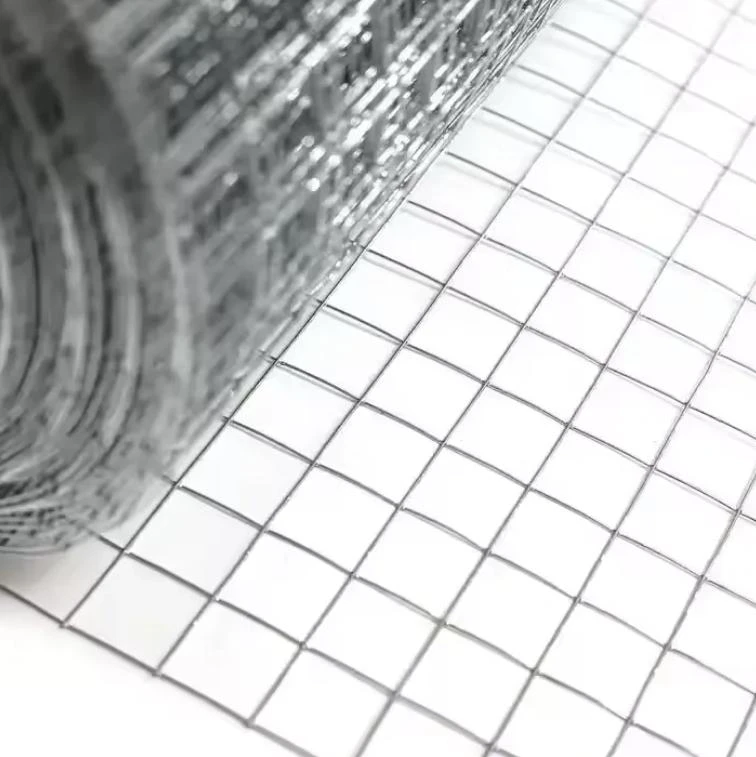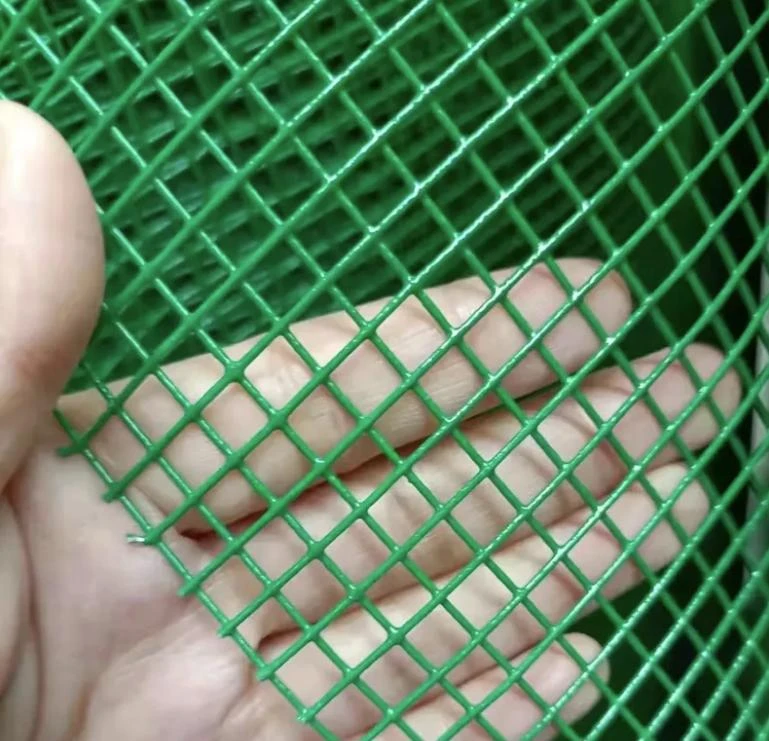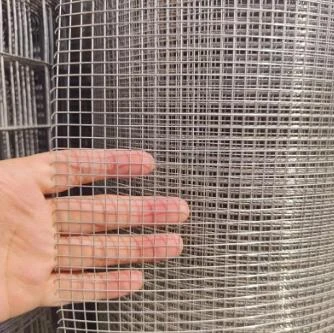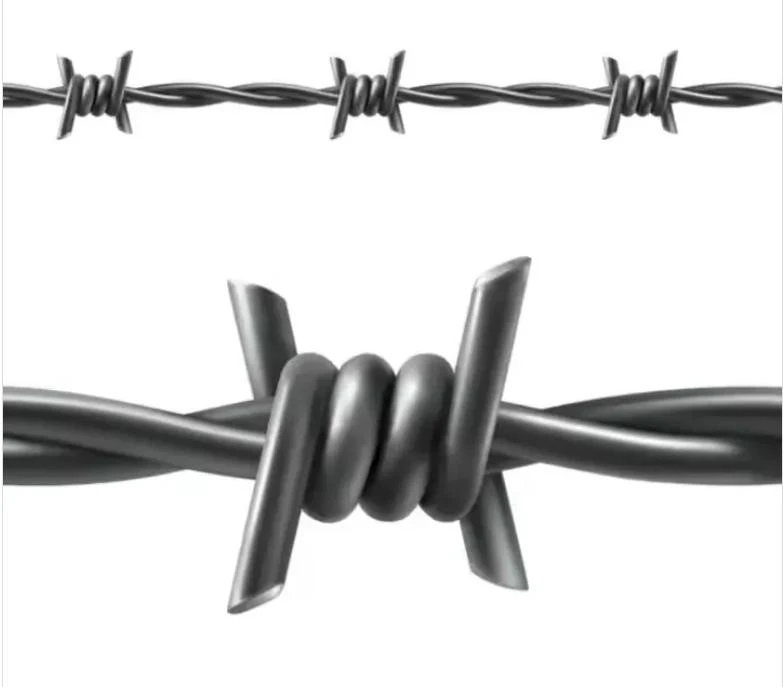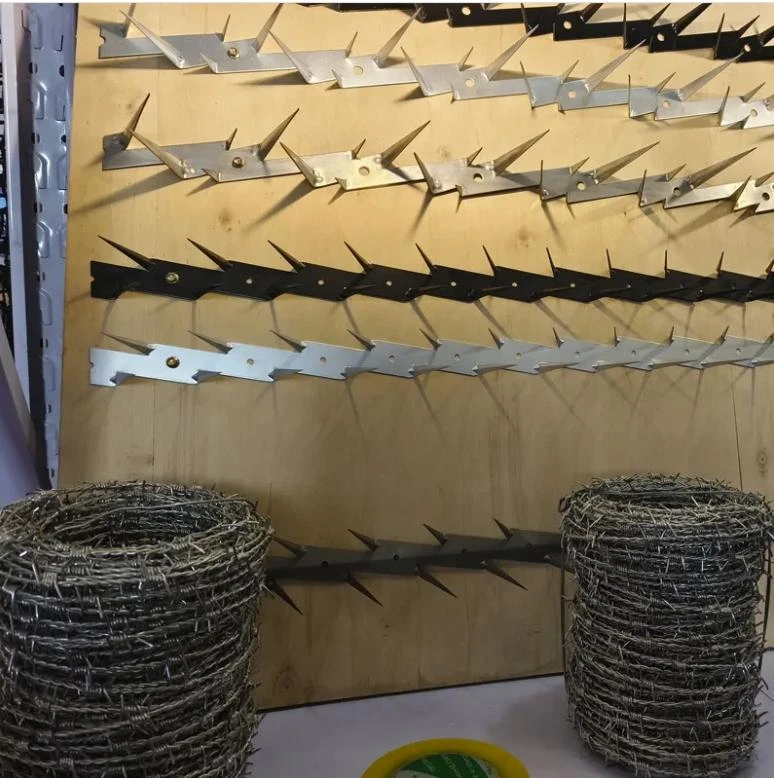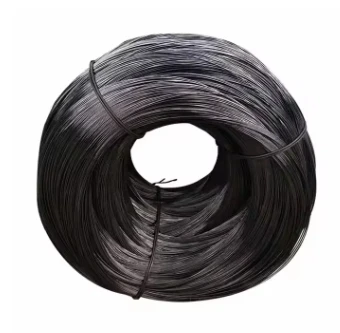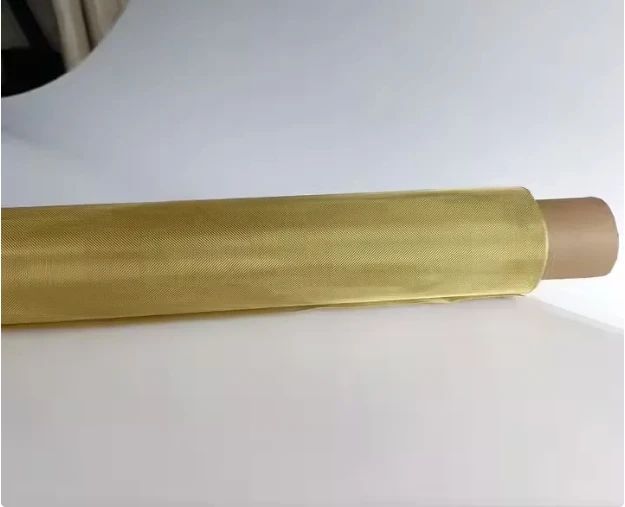Drut kolczasty wykonany jest z odpornych na korozję stalowych pasków tnących ocynkowanych, owiniętych wokół rdzenia z ocynkowanego drutu sprężynowego. Nie można go przeciąć bez wysoce wyspecjalizowanych narzędzi, a nawet wtedy jest to powolna i niebezpieczna praca. Drut kolczasty Concertina to trwała i bardzo skuteczna bariera, która jest uznawana i zaufana przez specjalistów ds. bezpieczeństwa.
Style żyletek
Style ostrzy dzielą się głównie na dwie serie:
BTO (przeszkoda z taśmy z kolcami) i CBT (taśma z kolcami harmonijkowymi).
Wśród nich można wyróżnić pięć najpopularniejszych stylów, w tym BTO-10 (ostrze krótkie), BTO-22 (ostrze średnie), BTO-30 (ostrze łezkowe), CBT-60 (ostrze haczykowe), CBT-65 (ostrze długie).
Why Galvanized Razor Wire Stands Up to Corrosion & Wear
In harsh environments—coastal salt spray, industrial chemicals, or relentless rain—ordinary fencing succumbs to rust and decay. But a razor wire fence with galvanized coating defies these forces, making it a staple for long-term security. JINJIU’s galvanized razor fence designs leverage advanced metallurgy to outlast corrosion and wear, ensuring lasting protection where other barriers fail.
At the core of this resilience is the hot-dip galvanizing process. Each strand of the razor wire fence is submerged in molten zinc (450°C), forming a metallurgical bond between zinc and steel. This creates a uniform coating—typically 80-120g/m² thick—that acts as a sacrificial barrier: zinc corrodes first, preserving the underlying steel. Unlike paint or plastic coatings that chip or peel, this zinc layer self-heals minor scratches, preventing rust from taking hold even when the surface is nicked.
Corrosion resistance shines in extreme conditions. In coastal areas, salt-laden air attacks unprotected metal, but galvanized razor fence forms a dense zinc oxide layer that blocks moisture and ions from reaching the steel core. Similarly, in industrial zones with chemical runoff or high humidity, the zinc coating neutralizes corrosive agents, maintaining structural integrity for 15+ years—far longer than uncoated alternatives, which degrade in 3-5 years.
Wear resistance adds another layer of durability. The razor wire fence’s high-tensile steel core, paired with the galvanized coating, withstands physical stress: repeated contact with wildlife, wind-driven debris, or accidental impacts. The sharp blades retain their edge longer, as zinc’s hardness (2.5 on the Mohs scale) resists dulling from friction or weathering. This means less frequent replacement, reducing long-term costs for facilities relying on a razor fence for perimeter security.
JINJIU’s commitment to quality ensures each galvanized razor wire fence meets strict standards, with coating thickness tested via ultrasonic measurement to guarantee consistency. Whether securing ports, prisons, or agricultural land, the result is a barrier that thrives in the toughest conditions—proof that galvanization isn’t just a treatment, but a promise of enduring performance.
From Prisons to Factories: Key Applications for Single Razor Wire
Single razor wire is a versatile security solution, and JINJIU’s razor wire fence designs excel across high-stakes environments, from maximum-security facilities to industrial sites. Its unique blend of deterrence and durability makes it indispensable where unauthorized access risks safety, assets, or operations.
Prisons and correctional facilities rely on a razor fence for perimeter control. The sharp, interlocking blades create an impassable barrier, discouraging escape attempts or external breaches. JINJIU’s single razor wire—mounted atop walls or along fences—features high-tensile steel cores and galvanized coatings, withstanding tampering and harsh weather. Its compact design fits within tight security perimeters, ensuring minimal space usage while maximizing protection, a critical factor in confined prison layouts.
Industrial factories and manufacturing plants turn to razor wire fences to safeguard equipment, inventory, and sensitive machinery. Warehouses storing high-value goods (electronics, pharmaceuticals) benefit from its visible deterrence, reducing theft risks. The wire’s resistance to cutting tools and corrosion (via hot-dip galvanization) makes it ideal for outdoor storage yards or facilities near chemical exposure, where durability directly impacts long-term security costs.
Border checkpoints and customs zones use a razor fence to manage controlled access. Its ability to span large distances—with rolls up to 50m—simplifies installation along vast perimeters. The sharp blades deter illegal crossings without impeding official vehicle or pedestrian flow, balancing security with operational efficiency. For remote border regions, JINJIU’s UV-resistant razor wire fence withstands extreme temperatures and wildlife interference, ensuring consistent performance in unmonitored areas.
Agricultural and energy sites also leverage single razor wire. Farms protecting livestock from predators or crops from theft use it to reinforce existing fences, while solar farms and wind installations secure equipment against vandalism. The wire’s lightweight design eases installation across uneven terrain, making it suitable for rural landscapes where heavy barriers are impractical.
In every application, JINJIU’s razor fence combines functionality with adaptability: customizable blade density (10-16 blades/m) for varying threat levels, and material options (galvanized steel or stainless steel) for climate resilience. It’s not just a barrier—it’s a tailored security partner, proving that a single razor wire’s value spans far beyond its sharp edges.
BTO-10 (krótkie ostrze)
Drut o krótkim ostrzu BTO-10 jest najkrótszym typem ostrza, pierwotnie opracowanym do zastosowań wojskowych. Zachowuje oryginalny profil
Taśma kolczasta z drutu kolczastego jest najbardziej ekonomiczna spośród wszystkich taśm kolczastych.
 |
|
Typ ostrza
|
Grubość zadziorów
|
Długość zadzioru
|
Szerokość zadzioru
|
Odstępy między zadziorami
|
Średnica drutu rdzeniowego
|
|
BTO-10
|
0.5 ± 0.05
|
10.0 ± 1
|
13 ± 1
|
25 ± 2
|
2.5 ± 0.1
|
BTO-22 (średnie ostrze)
Drut BTO-22 o średnim ostrzu to udoskonalenie drutu o krótkim ostrzu. Jest szeroko stosowany w zastosowaniach komercyjnych i przemysłowych. Drut koncertynowy o średnim ostrzu ma ostrzejsze krawędzie z zadziorami i jest bardziej ekonomiczny. W przypadku drutu BTO-22 oferujemy również nowe style ostrzy i cienkie, cienkie style drutu rdzeniowego jako tańsze opcje.
 |
|
Typ ostrza
|
Grubość zadziorów
|
Długość zadzioru
|
Szerokość zadzioru
|
Odstępy między zadziorami
|
Średnica drutu rdzeniowego
|
|
BTO-22
|
0.5 ± 0.05
|
22.0 ± 1
|
16 ± 1
|
35 ± 2
|
2.5 ± 0.1
|
BTO-30 (Ostrze rozrywające)
Nożyce z ostrzem drutowym BTO-30 to połączenie ostrza średniego i długiego, bardziej agresywne od ostrza średniego i bardziej ekonomiczne od ostrza długiego.
 |
|
Typ ostrza
|
Grubość zadziorów
|
Długość zadzioru
|
Szerokość zadzioru
|
Odstępy między zadziorami
|
Średnica drutu rdzeniowego
|
|
BTO-30
|
0.5 ± 0.05
|
30.0 ± 1
|
18 ± 1
|
45 ± 2
|
2.5 ± 0.1
|
CBT-60 (ostrze haczyka na ryby)
The CBT-60 Fish-hook blade wire is the metal in the middle that has gone through the most gyrations. All hooks have an eye to tie your line to, a sharp tip to pierce the fish’s mouth and a barb to hold it in place. Although there are a wide variety of innovations in point design, it’s the shank & the bend that has changed the most. This blade of protection effect is excellent and the cost is relatively high.
 |
|
Typ ostrza
|
Grubość zadziorów
|
Długość zadzioru
|
Szerokość zadzioru
|
Odstępy między zadziorami
|
Średnica drutu rdzeniowego
|
|
CBT-60
|
0.5 ± 0.05
|
60.0 ± 2
|
31 ± 1
|
100 ± 2
|
2.5 ± 0.1
|
CBT-65 (długie ostrze)
Długie ostrze CBT-65 jest lepkim produktem, gdy jest wytwarzane z hartowanego materiału ostrza ze stali nierdzewnej. Zazwyczaj jest używane do szermierki więziennej. Brzytwy o bardzo długim ostrzu zapewniają maksymalny efekt przerażenia.
 |
|
Typ ostrza
|
Grubość zadziorów
|
Długość zadzioru
|
Szerokość zadzioru
|
Odstępy między zadziorami
|
Średnica drutu rdzeniowego
|
|
CBT-65
|
0.5 ± 0.05
|
65.0 ± 1
|
51 ± 1
|
100 ± 2
|
2.5 ± 0.1
|
Specyfikacje pętli cewek
|
Średnica zewnętrzna
|
Liczba pętli
|
Wydłużona długość
|
Typ Bade
|
Typ cewki
|
|
300 mm
|
33
|
4–6 m
|
CBT- 60, 65
|
Pojedyncza cewka
|
|
450 mm
|
33
|
7–8 m
|
CBT- 60, 65
|
Pojedyncza cewka
|
|
500 mm
|
56
|
12–13 m
|
CBT- 60, 65
|
Pojedyncza cewka
|
|
700 mm
|
56
|
13–14 m
|
CBT- 60, 65
|
Pojedyncza cewka
|
|
960 mm
|
56
|
14–15 m
|
CBT- 60, 65
|
Pojedyncza cewka
|
|
450 mm
|
56
|
8–9 m (3 clips)
|
BTO- 10, 12, 18, 22, 28, 30
|
Typ krzyżowy
|
|
500 mm
|
56
|
9–10 m (3 clips)
|
BTO- 10, 12, 18, 22, 28, 30
|
Typ krzyżowy
|
|
600 mm
|
56
|
10–11 m (3 clips)
|
BTO- 10, 12, 18, 22, 28, 30
|
Typ krzyżowy
|
|
700 mm
|
56
|
10–12 m (5 clips)
|
BTO- 10, 12, 18, 22, 28, 30
|
Typ krzyżowy
|
|
900 mm
|
56
|
12–14 m (5 clips)
|
BTO- 10, 12, 18, 22, 28, 30
|
Typ krzyżowy
|
|
980 mm
|
56
|
14–16 m (5 clips)
|
BTO- 10, 12, 18, 22, 28, 30
|
Typ krzyżowy
|
Szczegóły produktu
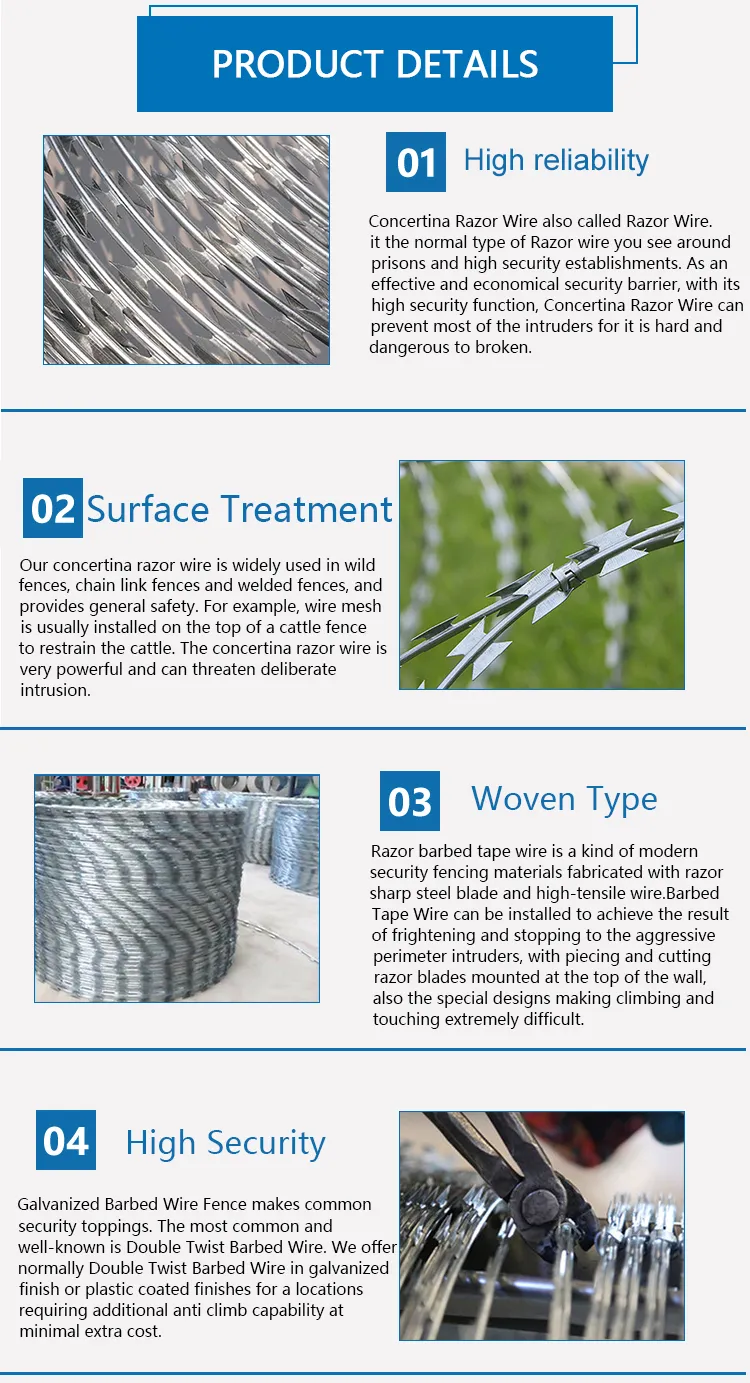
Drut kolczasty jest powszechnie stosowany w obiektach zapewniających bezpieczeństwo, takich jak ogrody, szpitale, przedsiębiorstwa przemysłowe i górnicze, więzienia, posterunki graniczne, ośrodki zatrzymań, budynki rządowe itp.
Używa się go również do wyznaczania linii kolejowych, autostrad, ogrodzeń rolniczych itp.
Scenariusz aplikacji





















